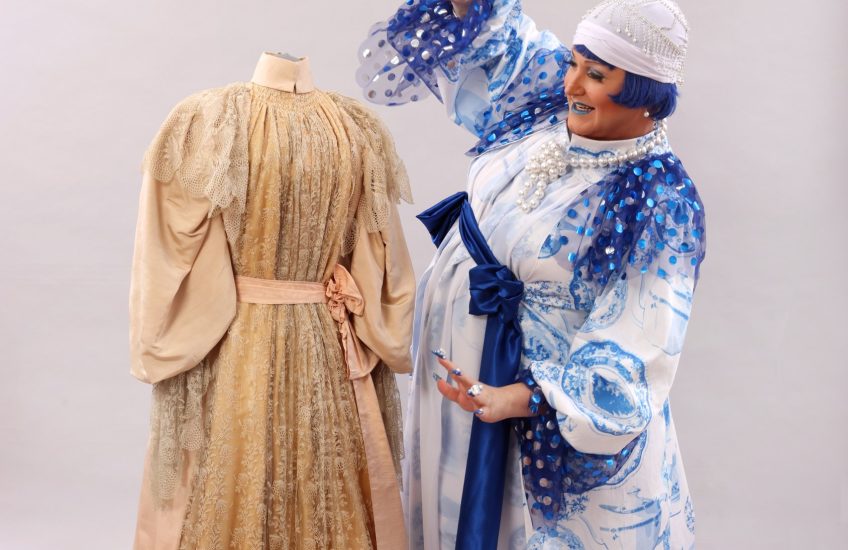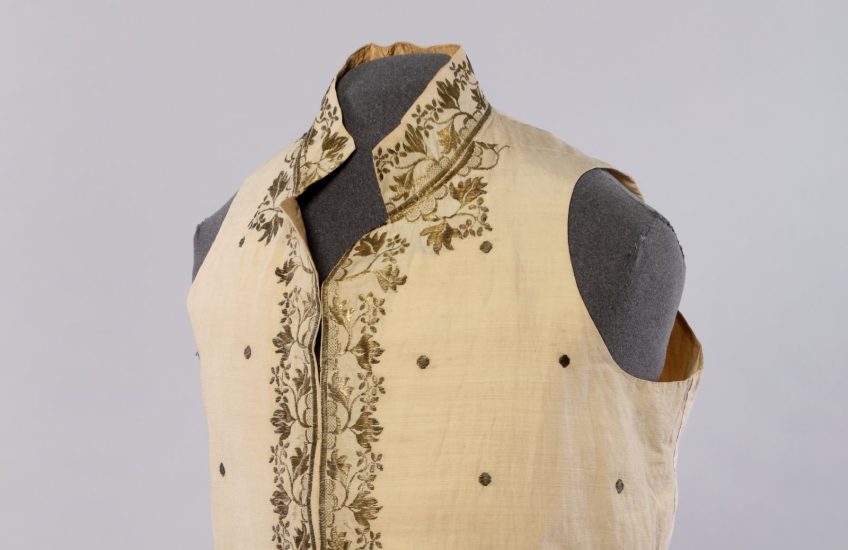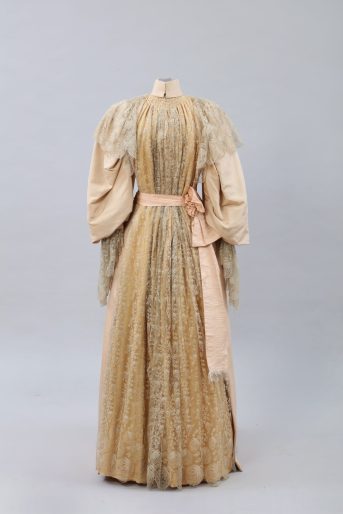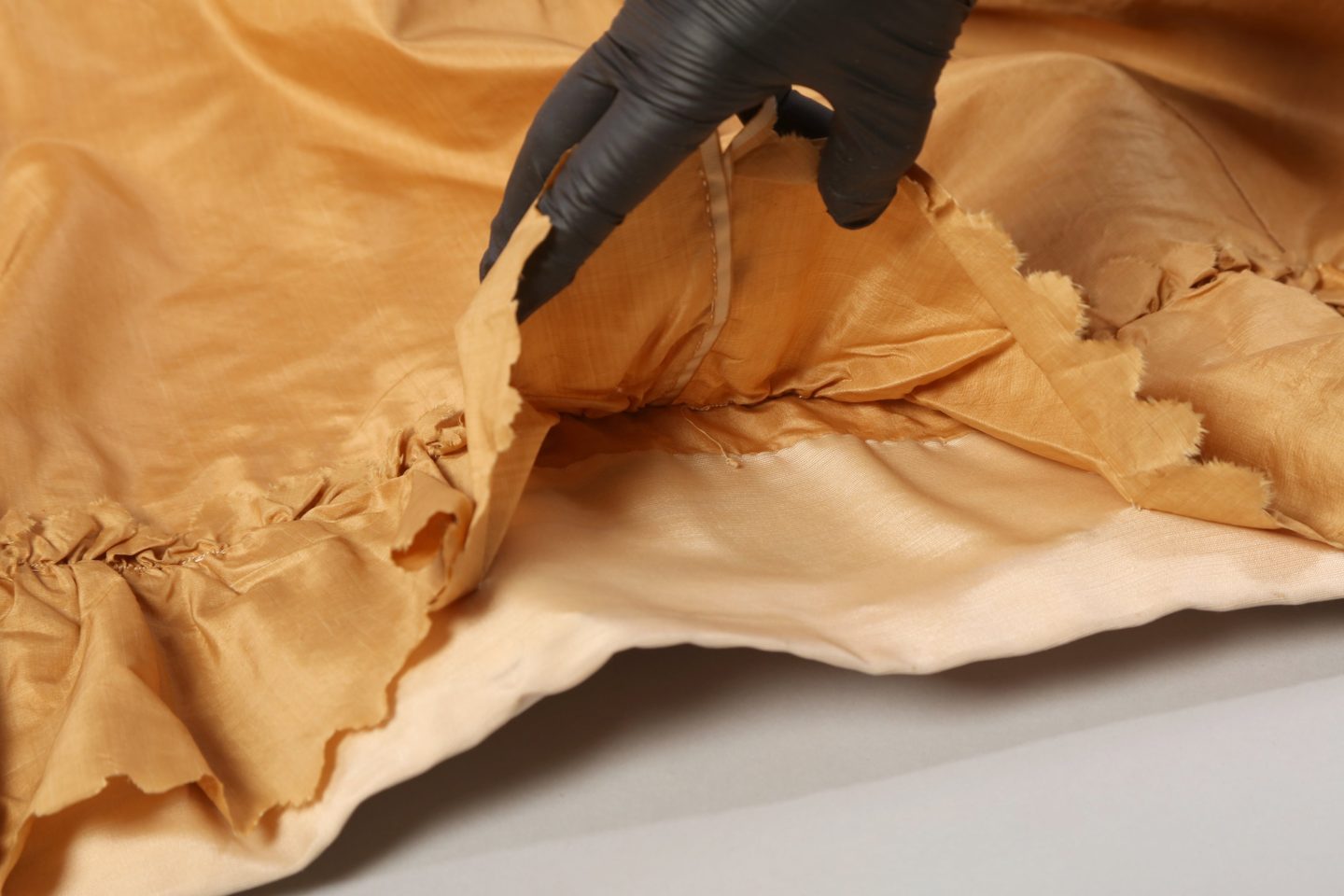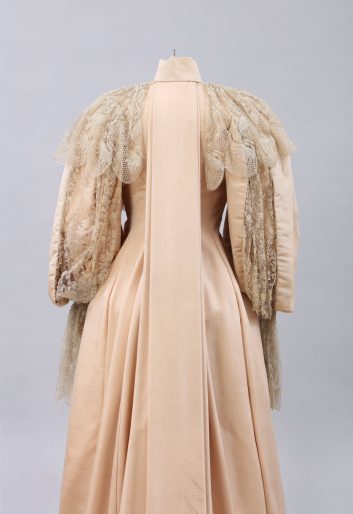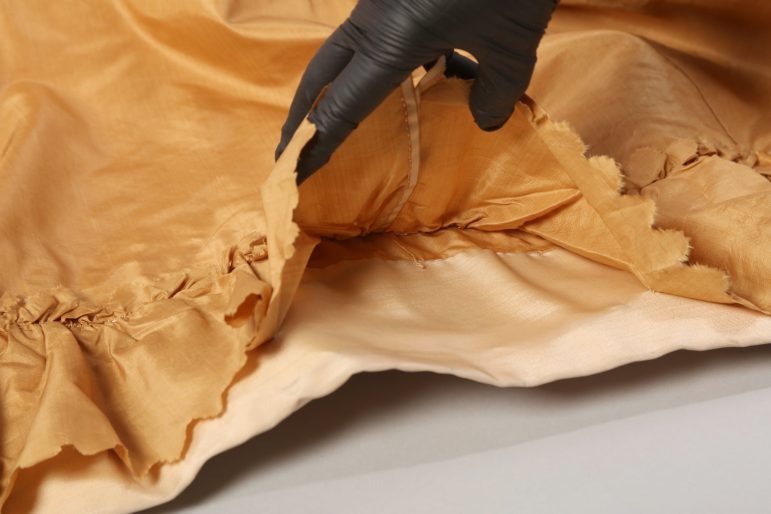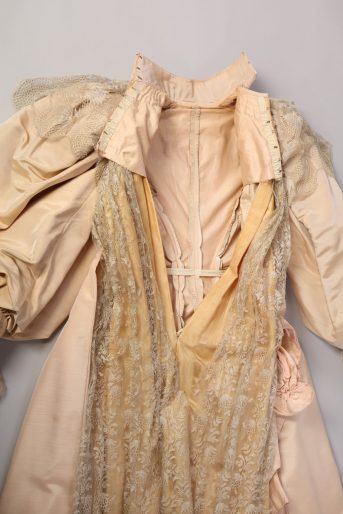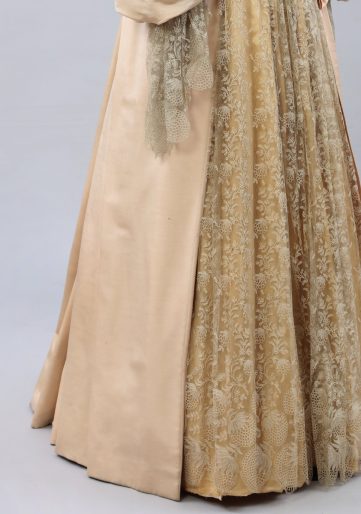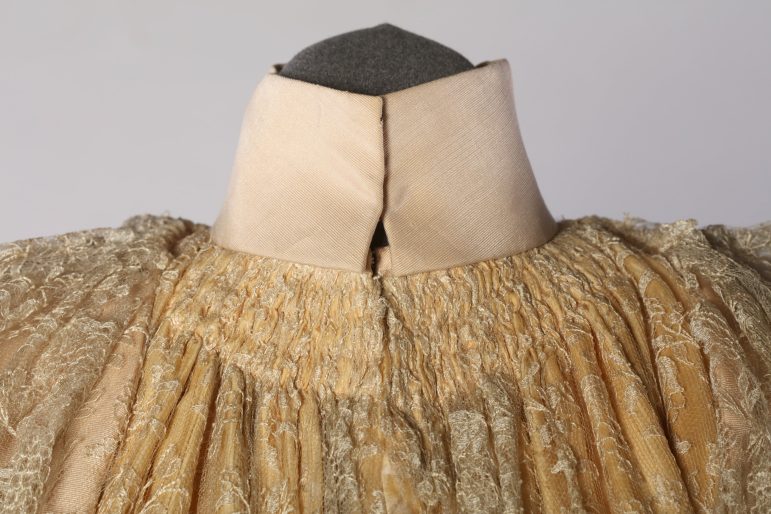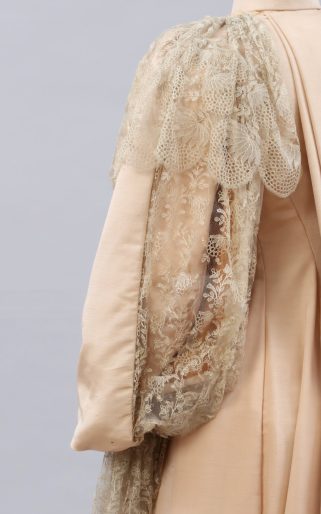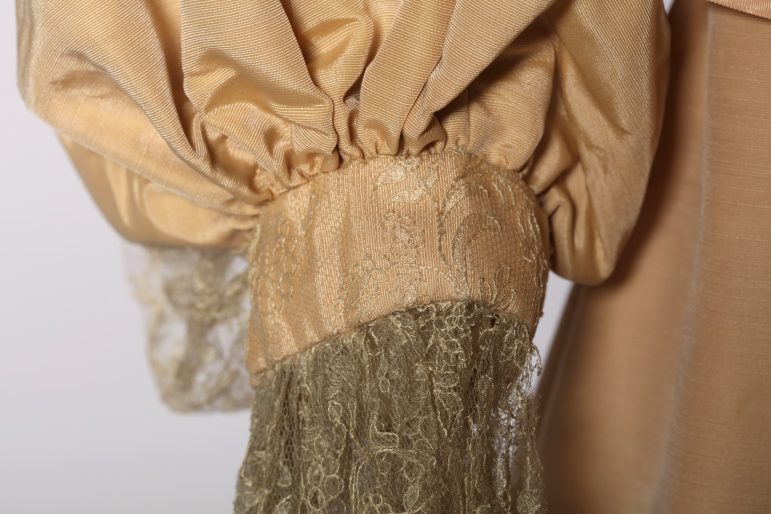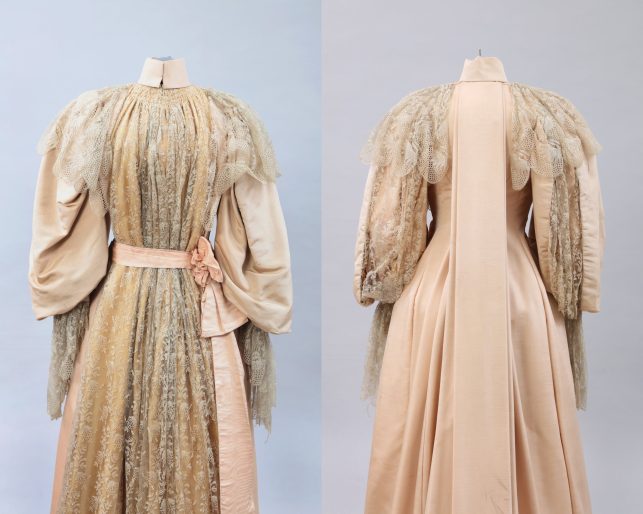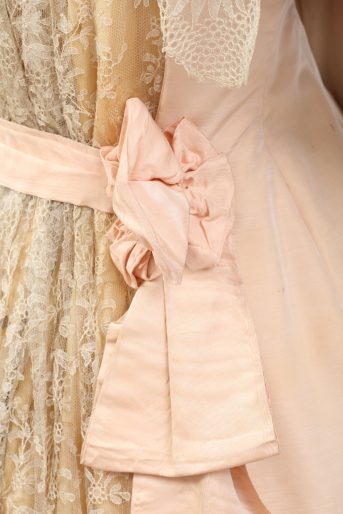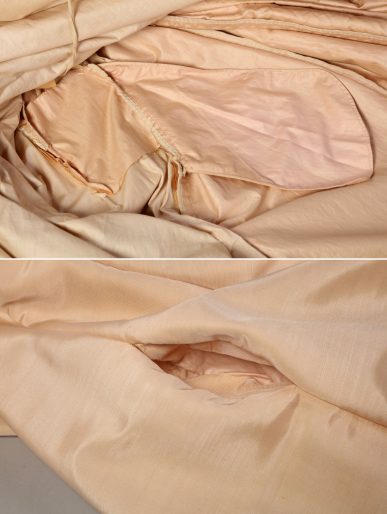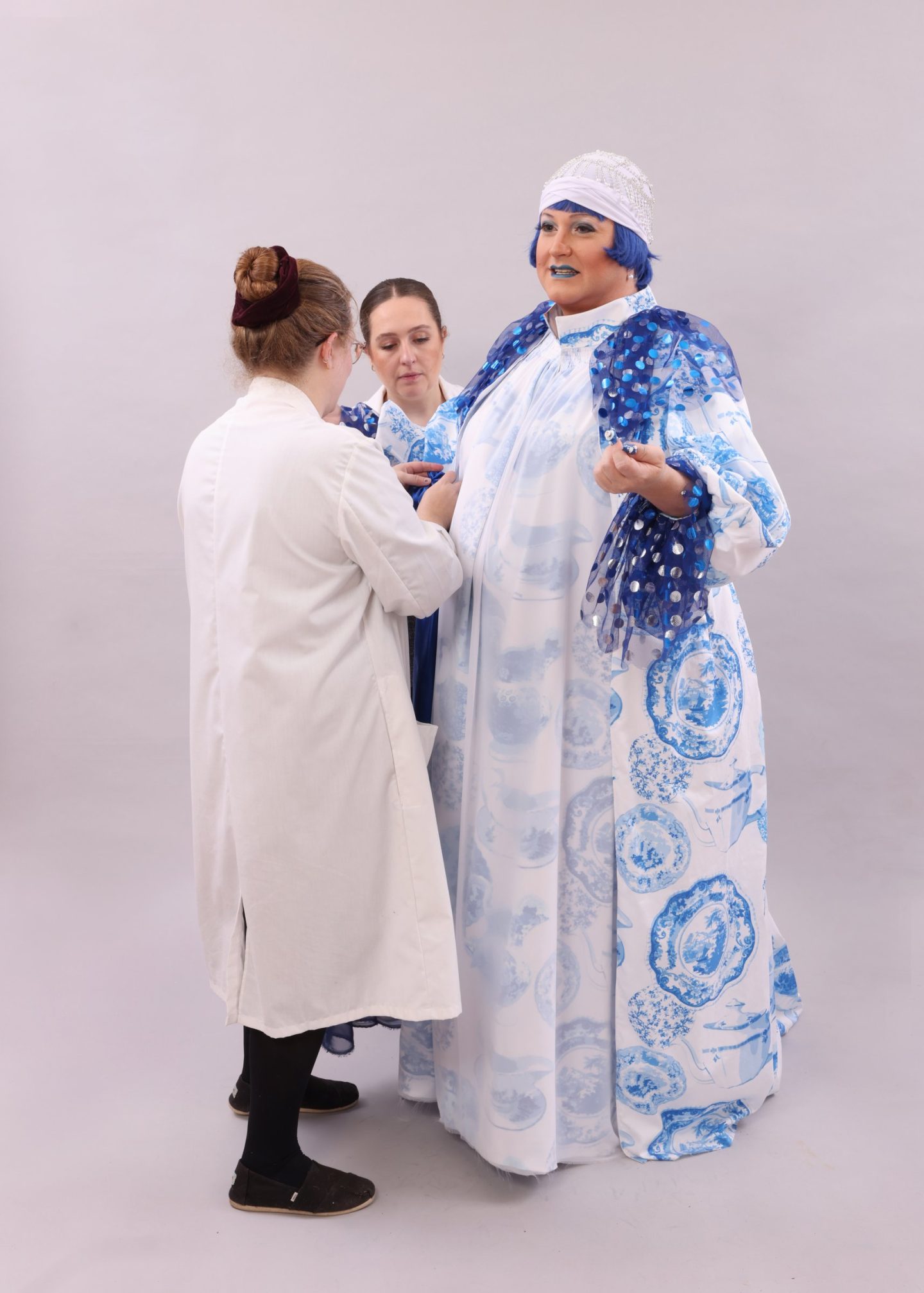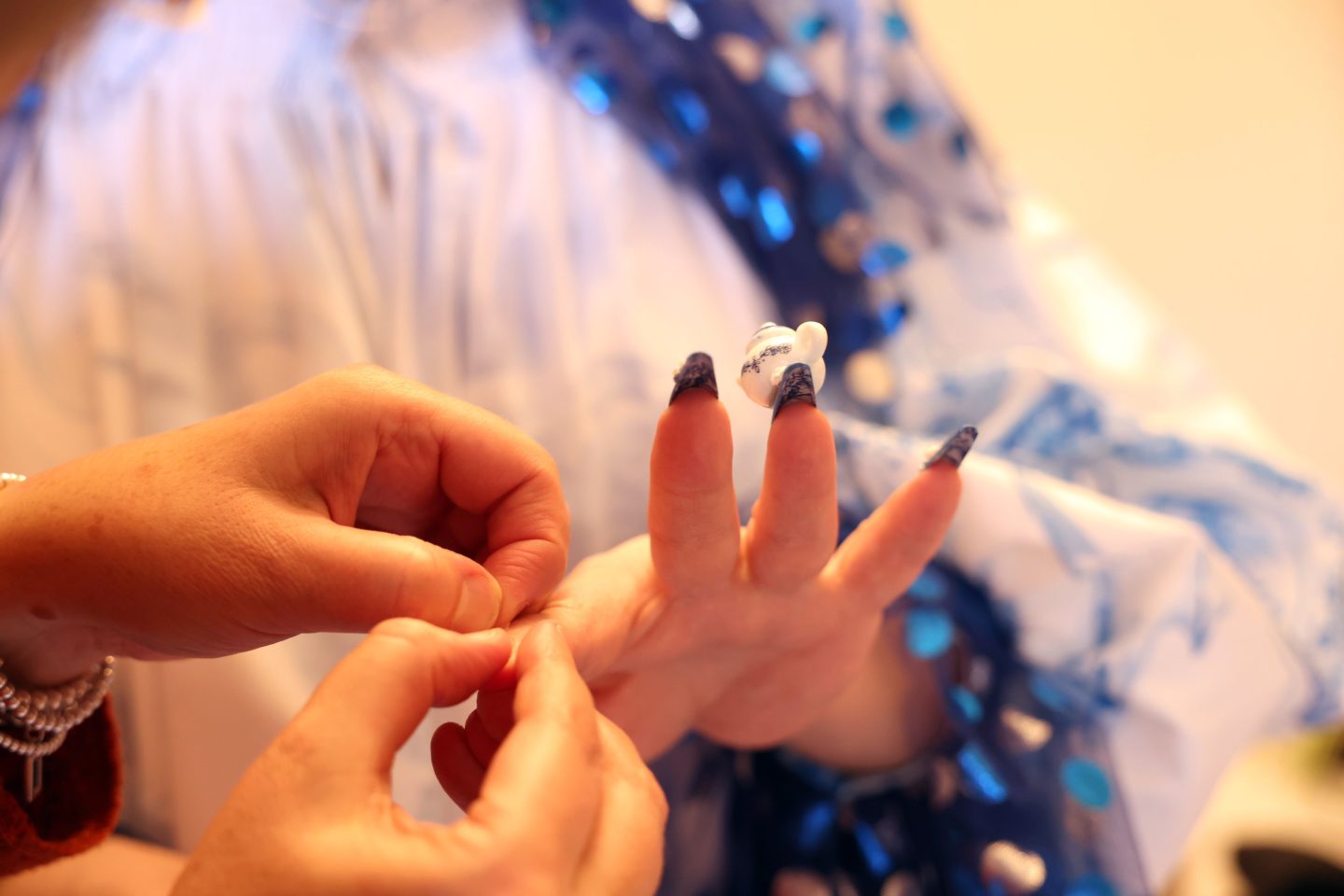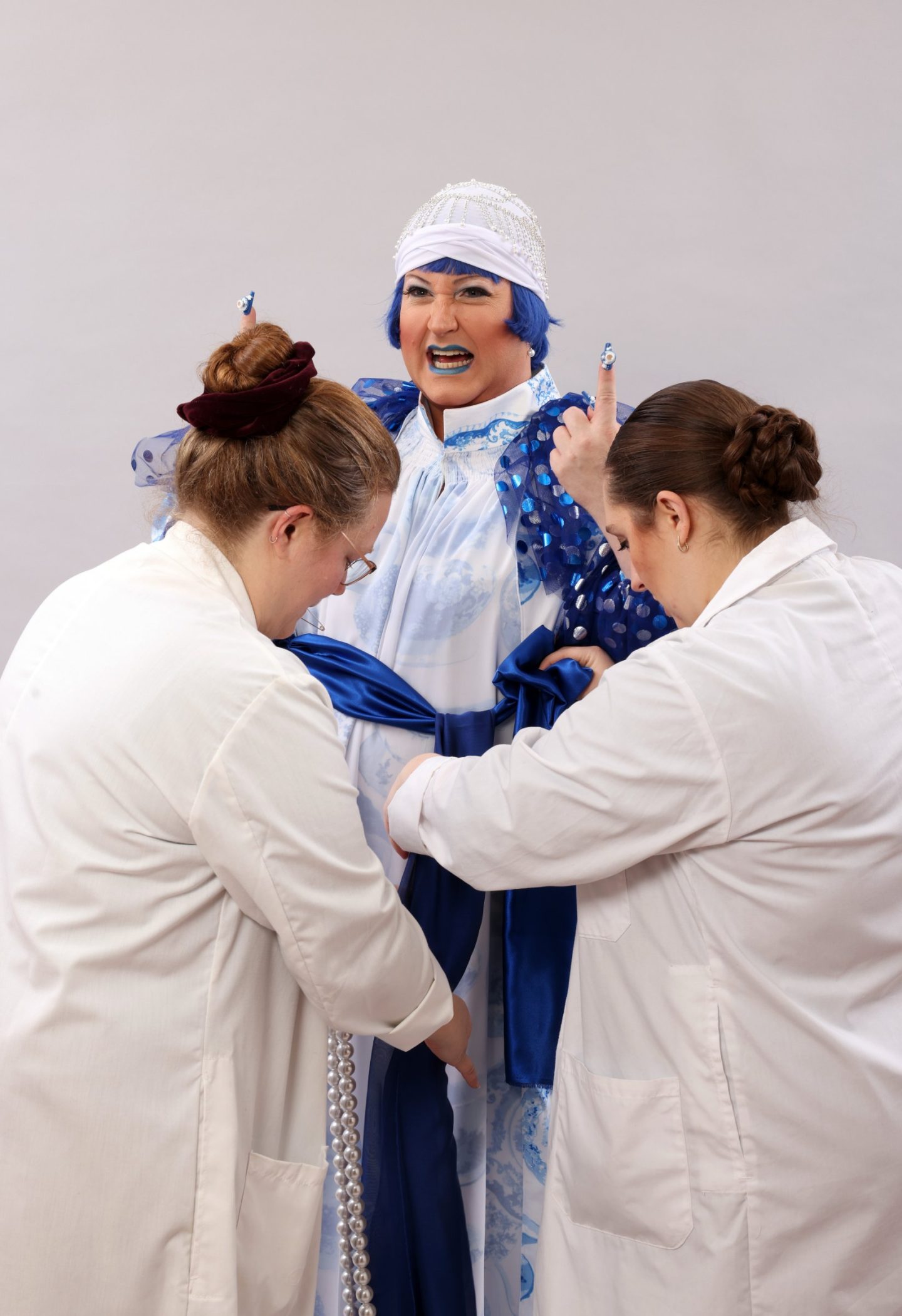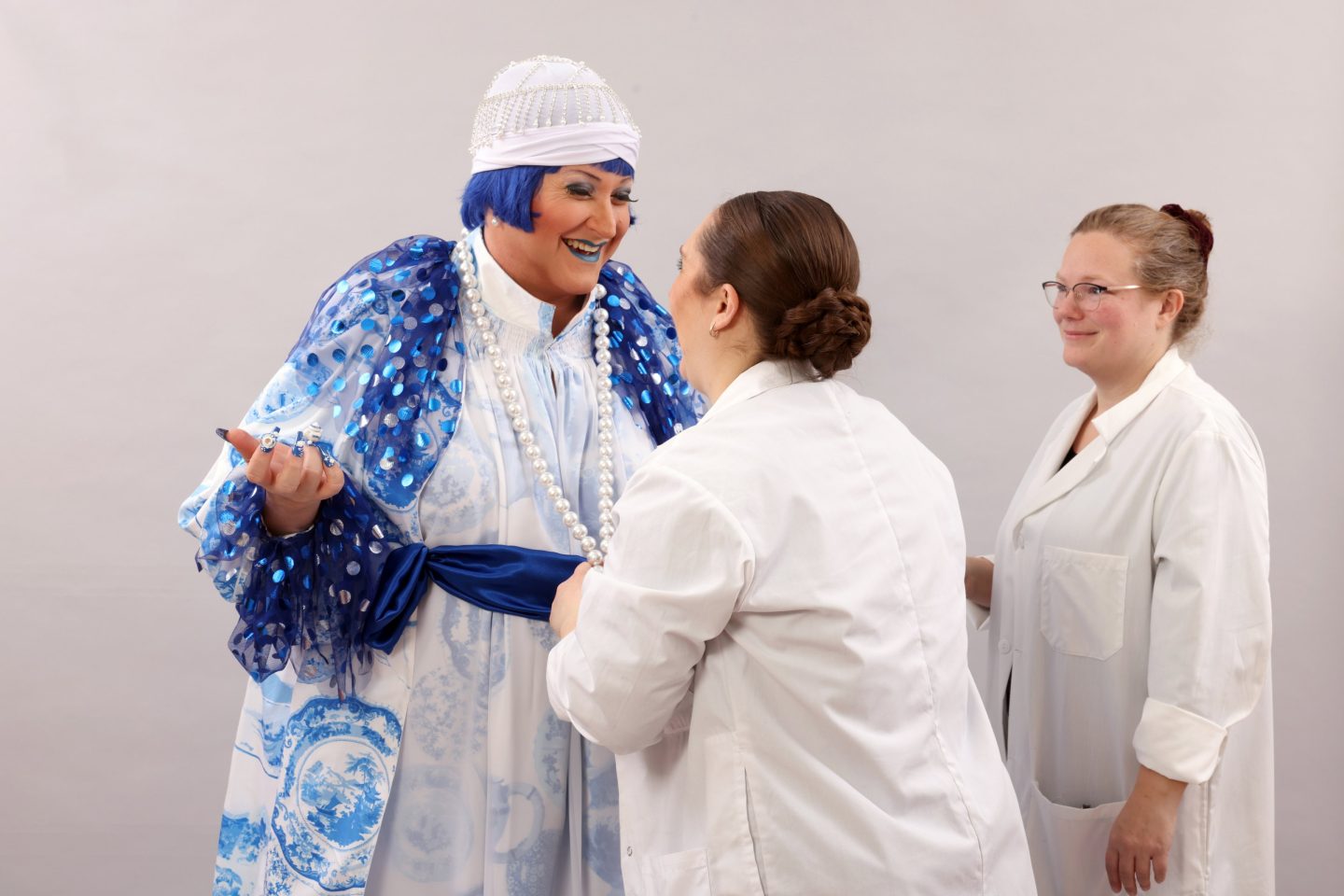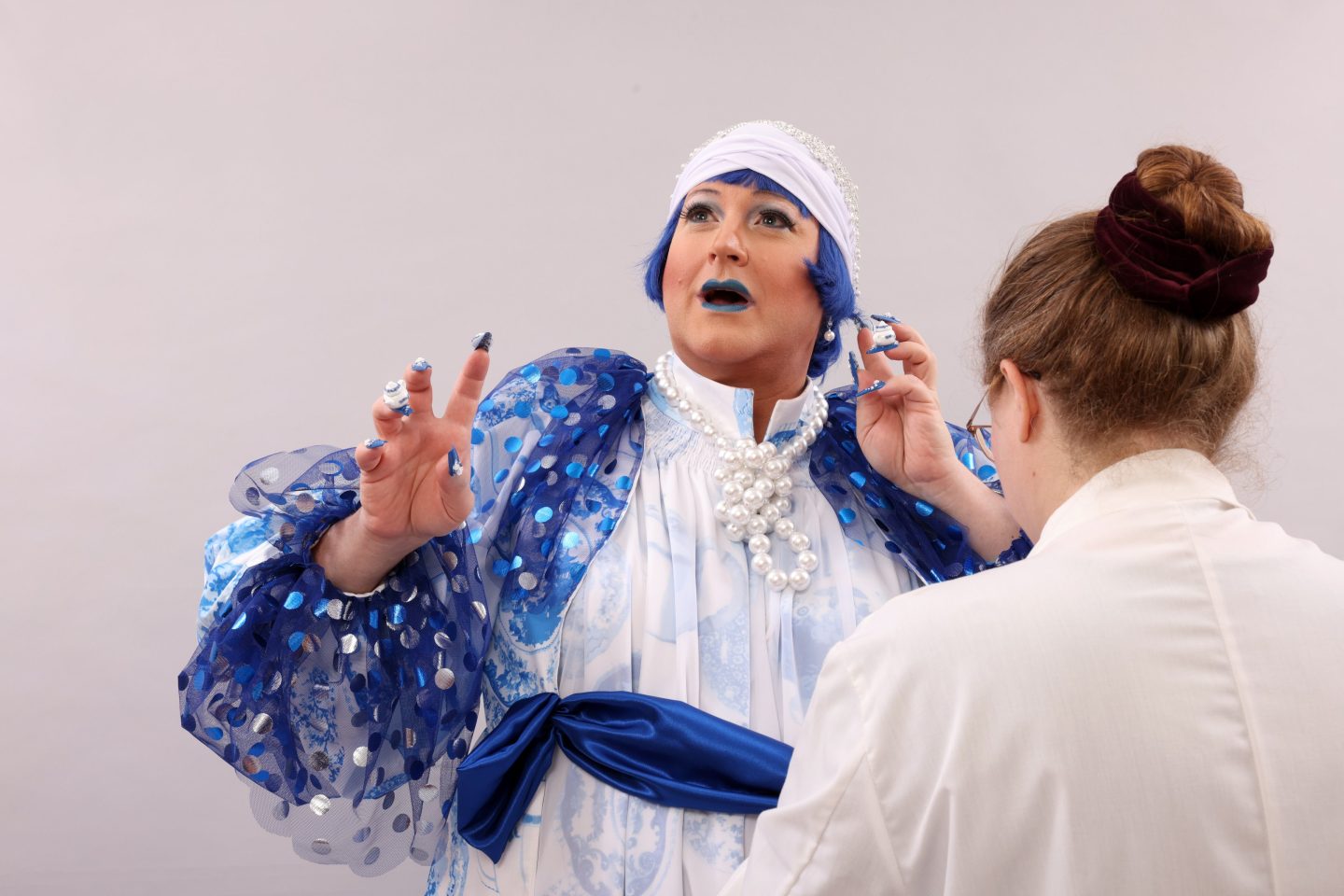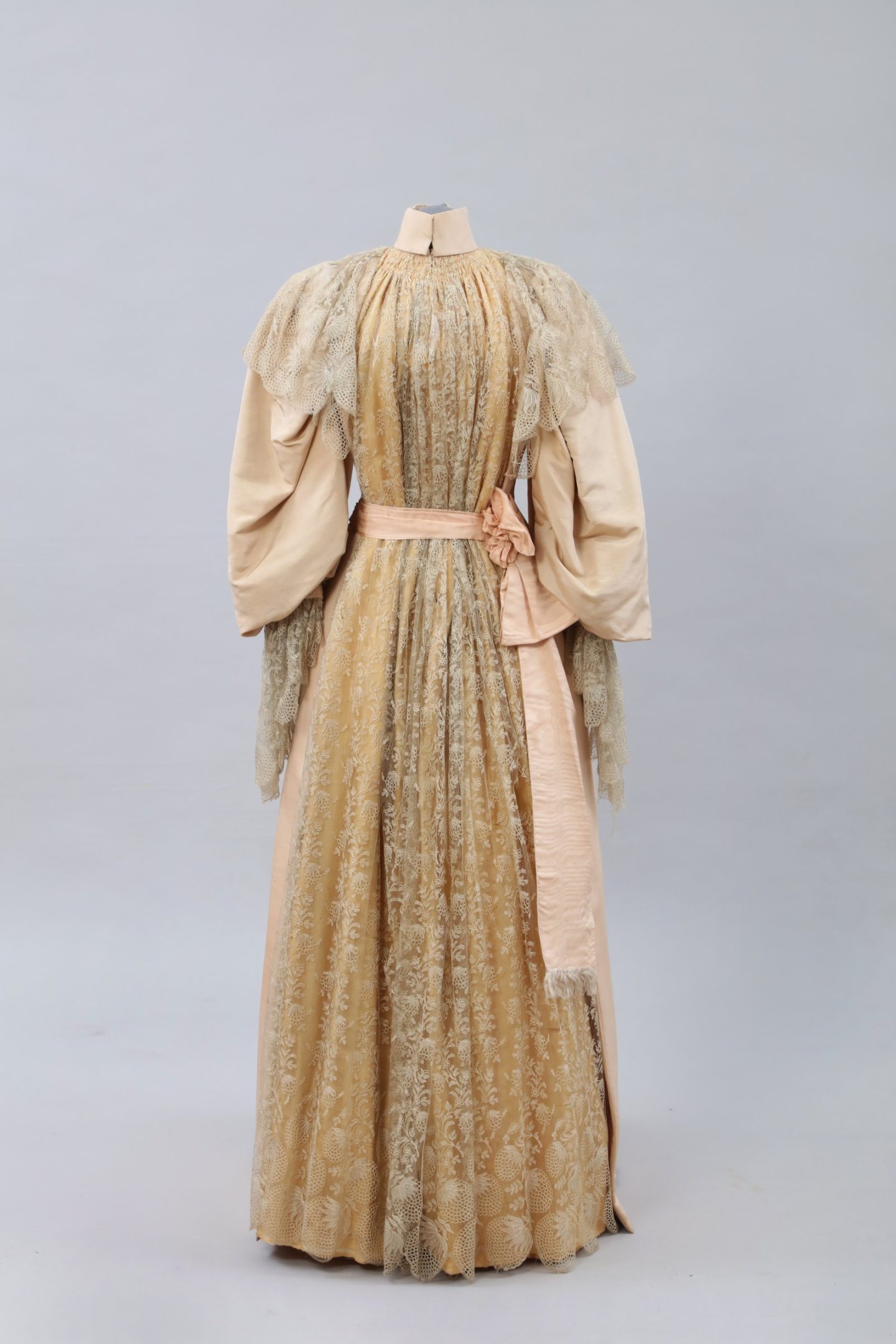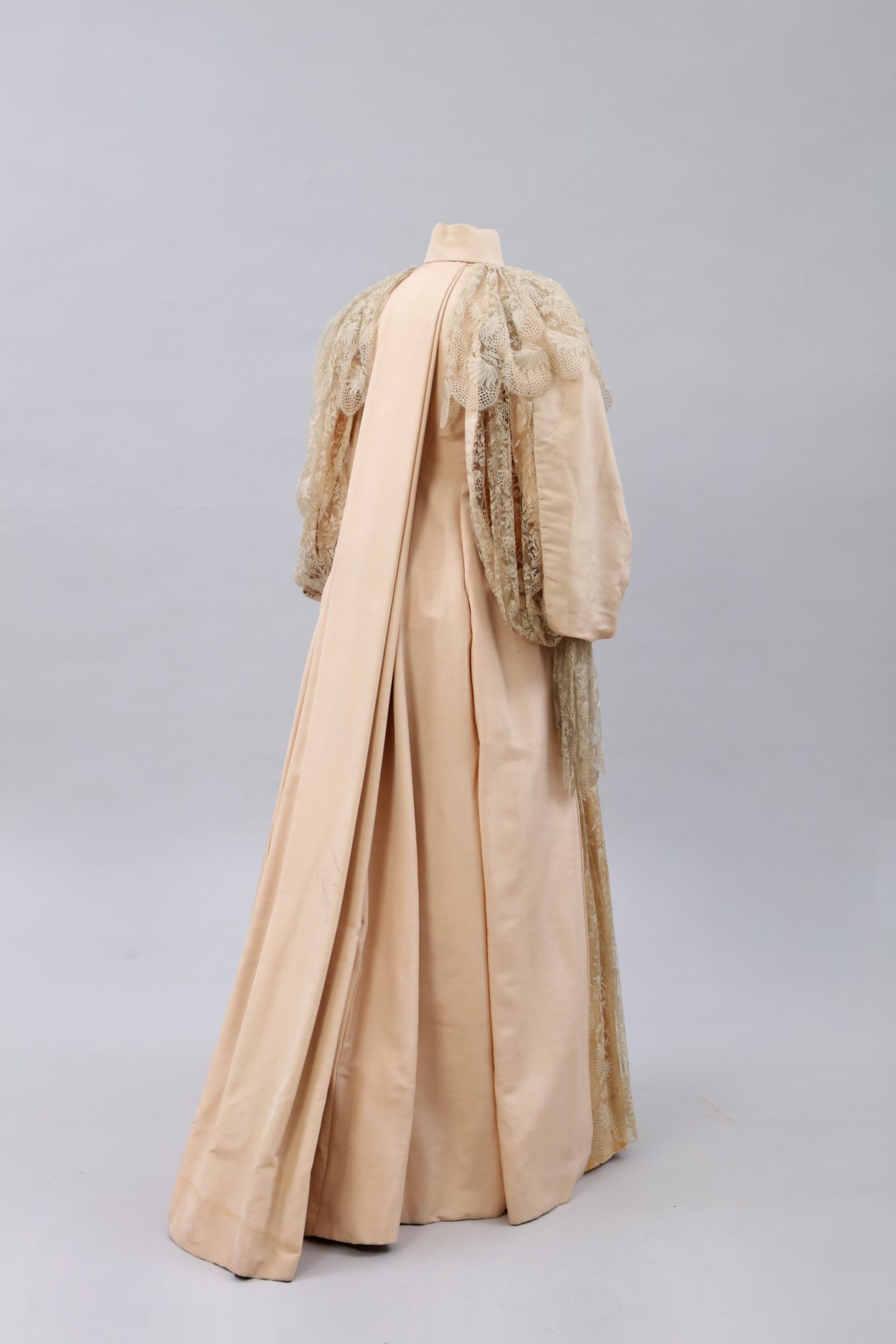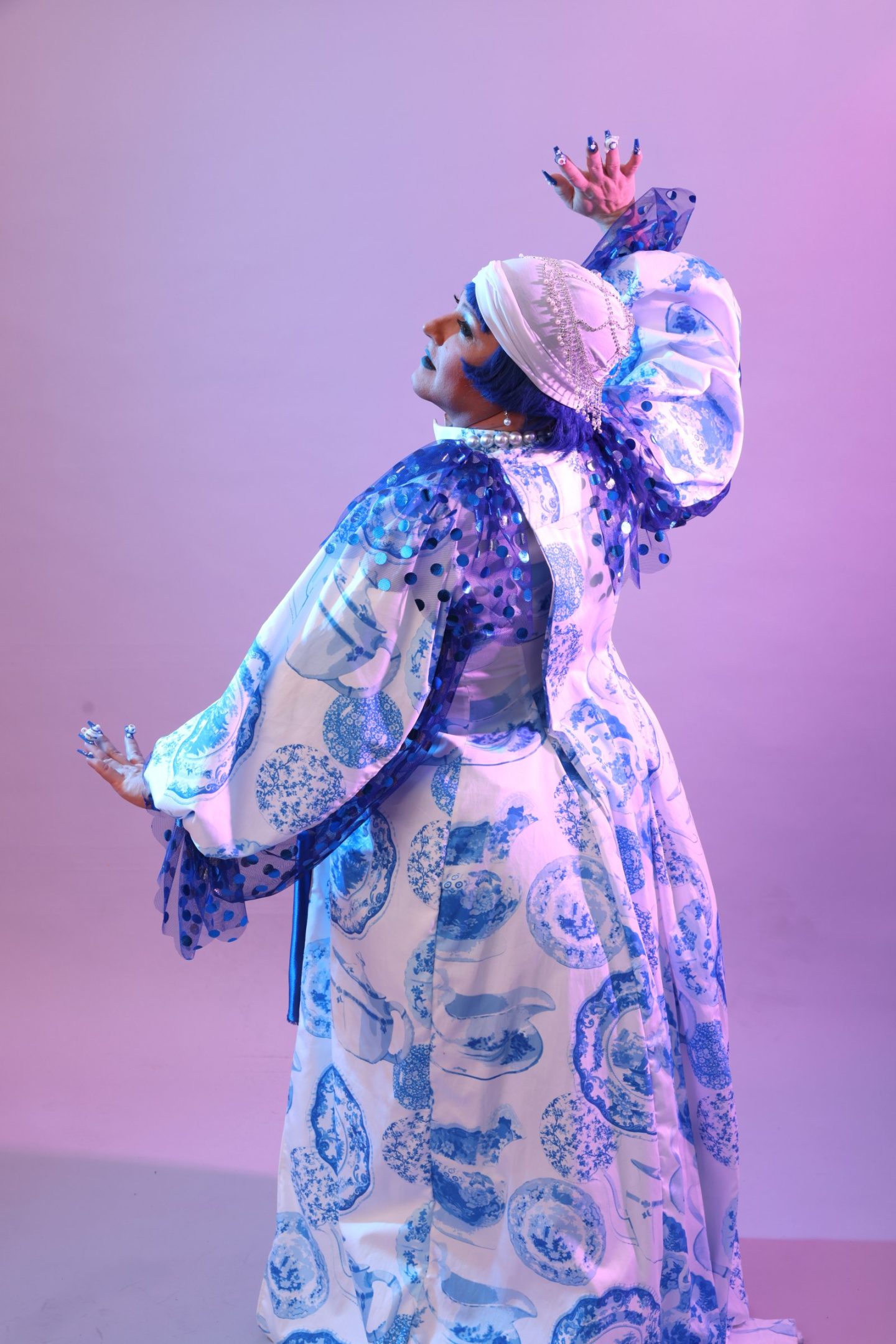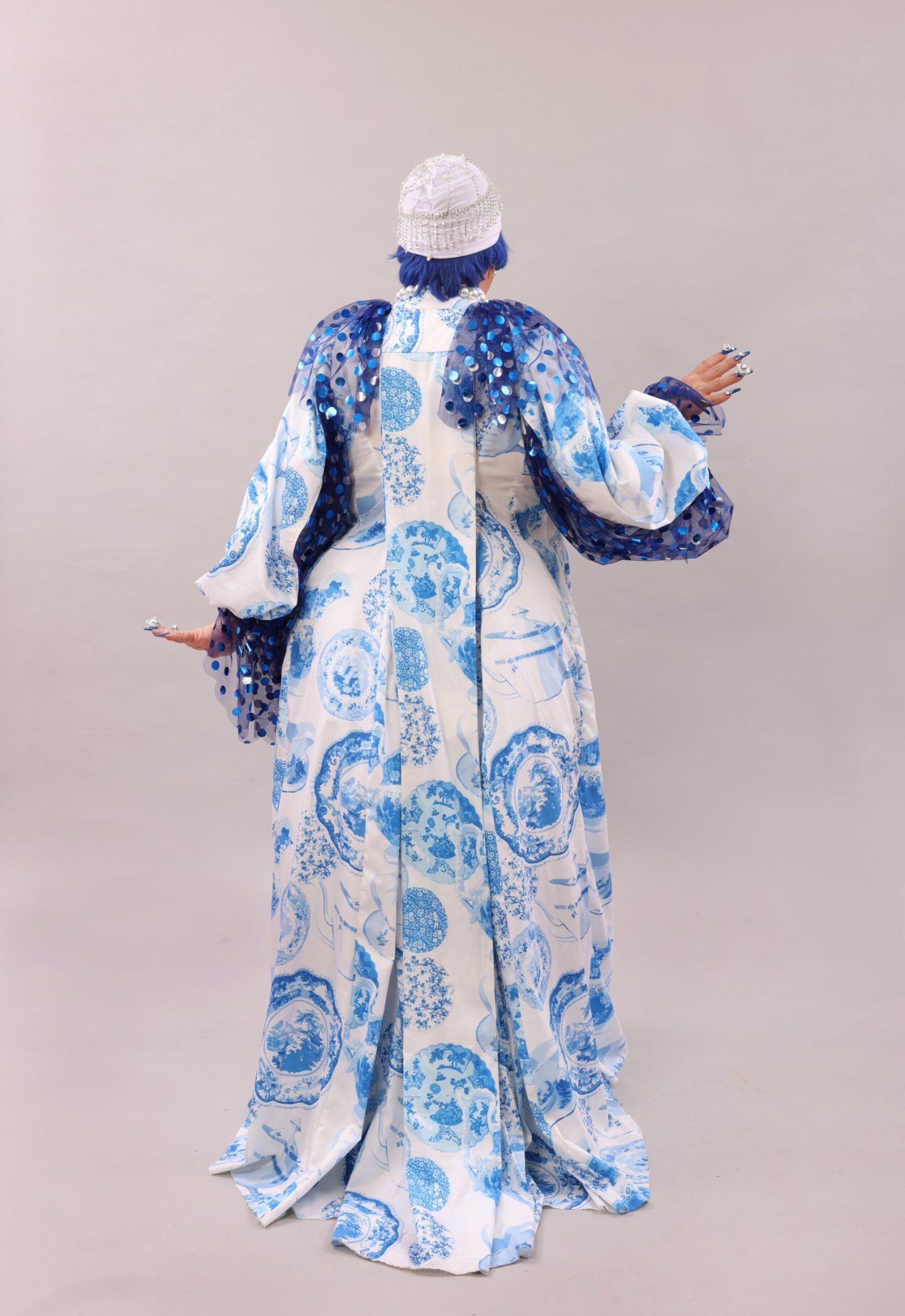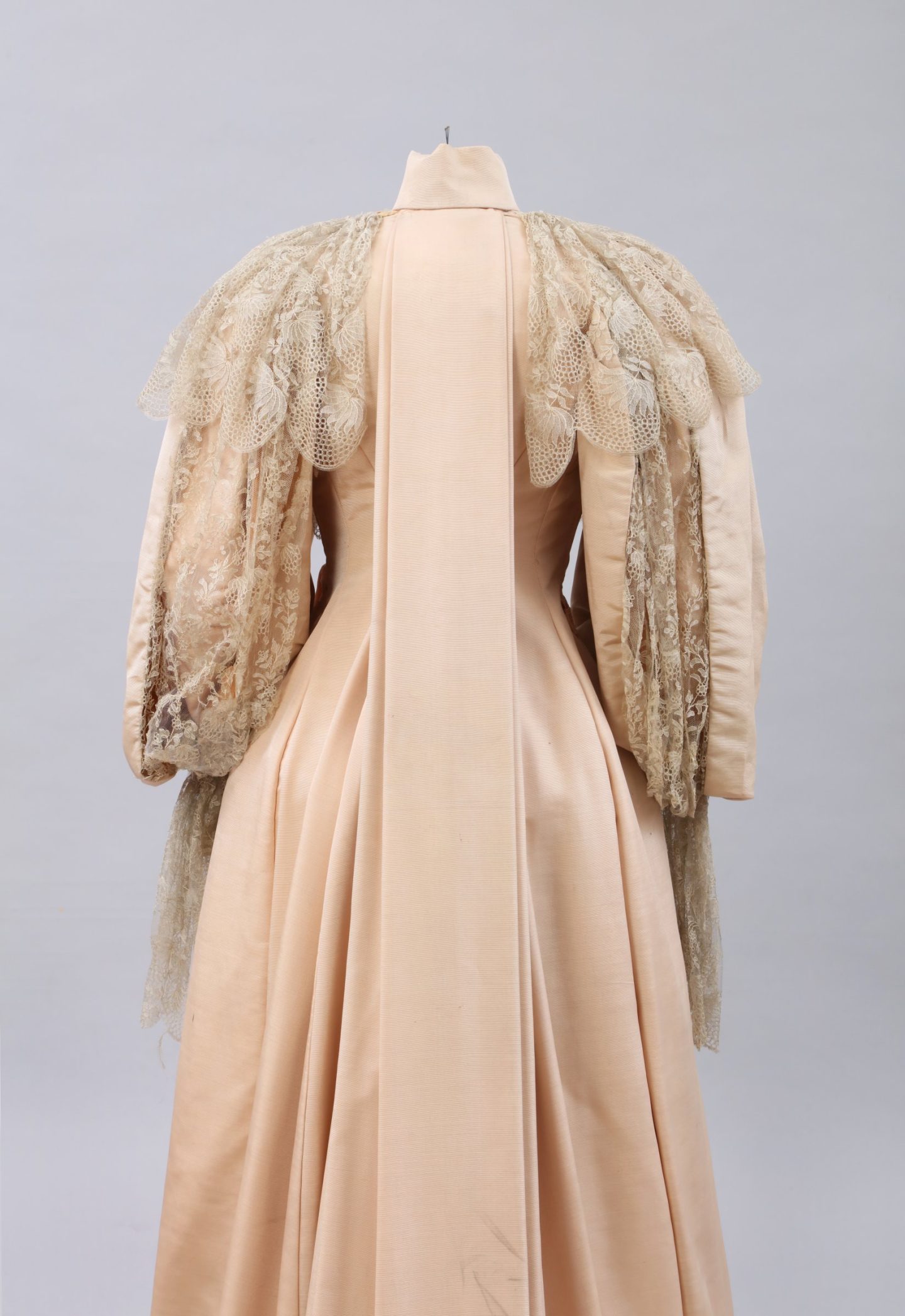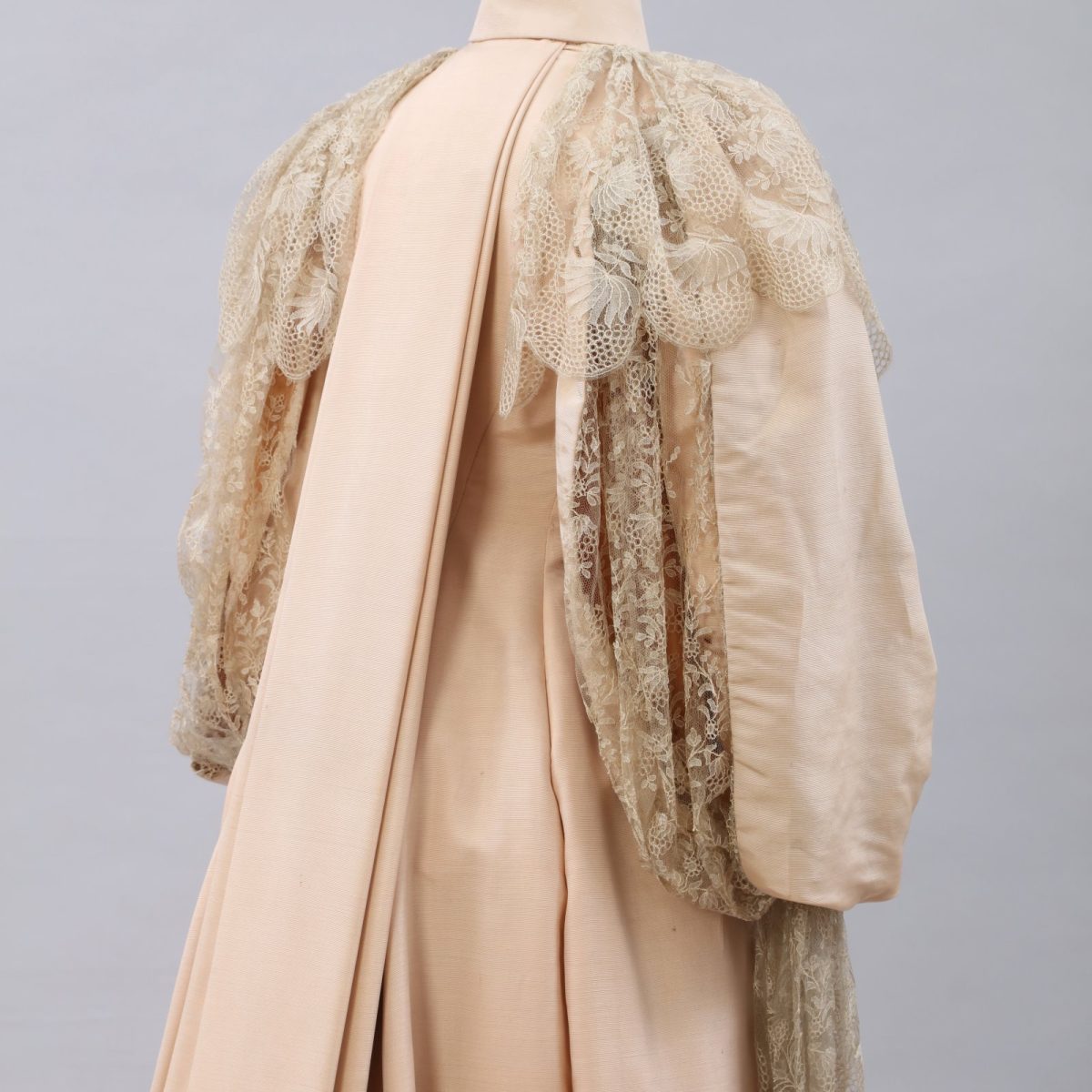
Worn by May Price Folger (1869–1935)
Re-Worn by Tyffanie Morgan
Teagown, Europe or North America, c. 1893–1900, silk faille, silk taffeta, silk lace, striped silk broadcloth, glazed cotton and twill cotton. Agnes Etherington Art Centre. Gift of Harriette Folger McGinnis, 1951 (C51-477.7). Made by Maker Once Known
Tyffanie Morgan’s Teagown, Kingston, 2023, organic cotton and synthetic tulle. Made by Jessica Dykins
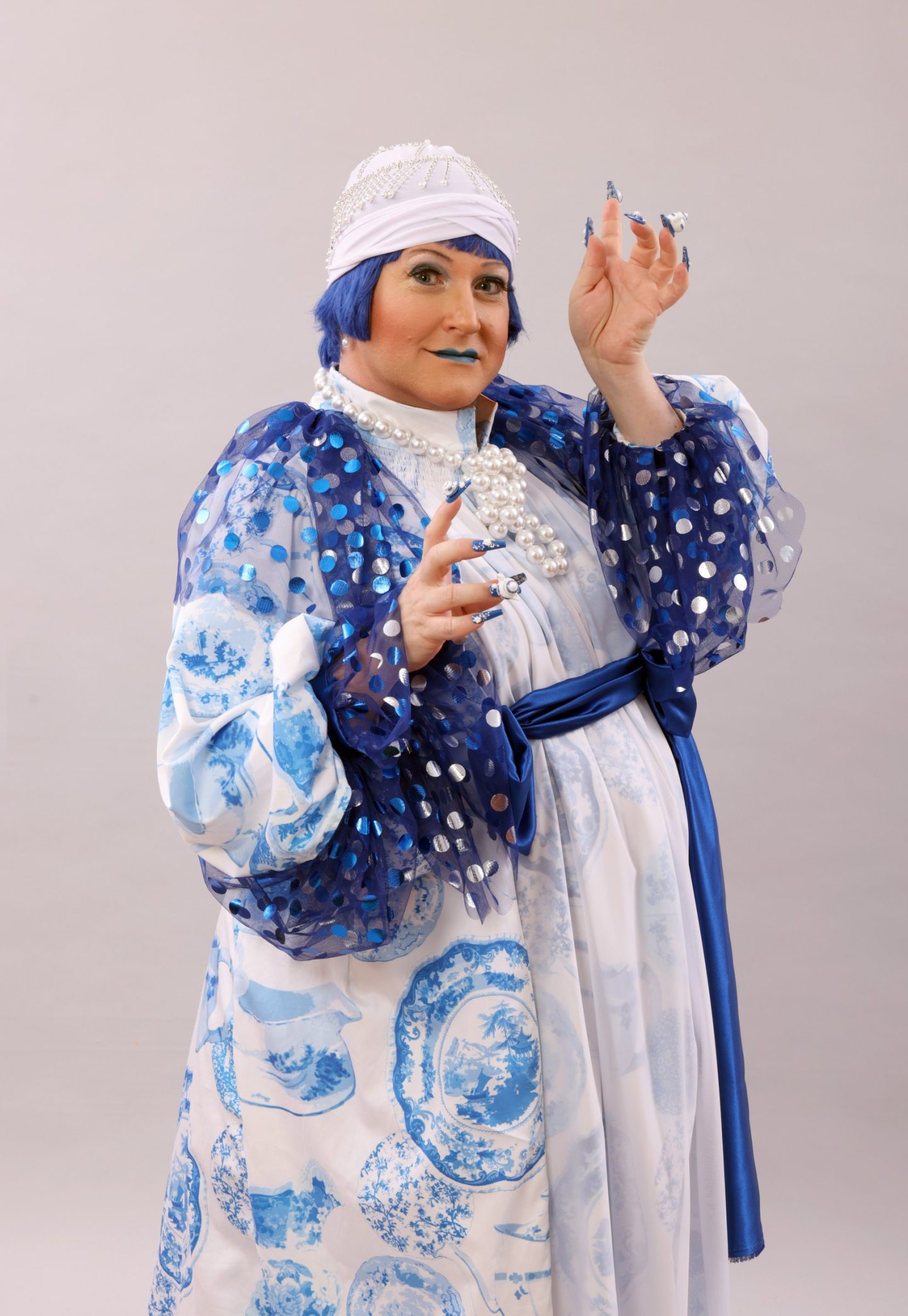
Tyffanie Morgan
Introducing Tyffanie Morgan, the charismatic drag queen reigning over Kingston, Ontario, and a multifaceted talent whose influence extends far beyond the stage. With over two decades of experience, Tyffanie is not just a “Kingston Drag” sensation but a community leader, community icon, event manager, and the heart behind DragShow.ca.
Tyffanie’s performances are a dazzling blend of glamour, creativity, charm, and unmatched stage presence. As a drag artist, she has become synonymous with successful drag show events that leave audiences mesmerized and wanting more. Her 20 years of experience shine through every captivating performance, solidifying her status as a cornerstone of Kingston’s vibrant entertainment scene.
Beyond the spotlight, Tyffanie is a green-thumbed gardener and horticulturalist, sharing her passion through the popular hashtag #TyffsGarden. This unique intersection of drag artistry and gardening prowess sets Tyffanie apart, showcasing her diverse interests and connecting with fans on a personal level.
Adding to her repertoire, Tyffanie is the co-host of the live broadcast podcast “What’s the Maple Tea?!” where she brings her wit and charm to the airwaves. This podcast, like Tyffanie herself, is a lively mix of entertainment, culture, and candid conversations, making it a must-listen for fans and newcomers alike.
As the owner, operator, and administrator of DragShow.ca, Tyffanie has created a vital hub for drag enthusiasts across Canada. This platform serves as the go-to source for drag event listings, cementing Tyffanie’s role as a central figure in the Canadian drag community.
Explore the vibrant world of Tyffanie Morgan on her website, https://tyffanie.com, where you can find updates on upcoming events, gardening tips, and exclusive podcast content. Tyffanie, the drag artist, gardener, podcaster, and entertainer, is not just a local sensation but a driving force shaping the narrative of Kingston’s dynamic cultural landscape.
Help Listening
Play Online
- Use the links on this page to choose which track you would like to listen to
- Press the “Play” button to begin
Listen In-Gallery
- Visit agnes.queensu.ca/digital-agnes
- Select the audio track you would like to listen to and press “Play”
Listening to this content will require a Wi-Fi connection or a data plan.
Some charges may apply, please consult your mobile provider)
Other Ways to Listen
Tap or click on “Transcript” under each track to read or download the full transcript of each audio commentary.

